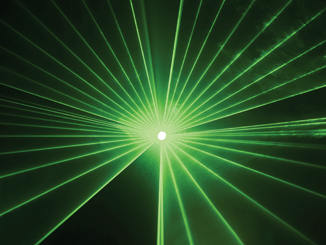Clinical

Research uses laser to monitor blood glucose
In Clinical
Bookmark
Record learning outcomes
 DETECTION BY LASER
DETECTION BY LASER
A device directing a laser at a diabetic’s finger may soon monitor glucose levels, replacing inconvenient finger-prick tests. A beam is projected through glass onto the finger pad, and the amount of light absorbed by the blood glucose shows the concentration. The 30-second procedure enables patients to self-regulate their blood sugar and could cut emergency hospital treatment, say Leeds University researchers. They hope the device will become available as a computer mouse-sized unit and a wearable version. Eventually the wearable monitor could remotely alert doctors when problems arise. In parallel projects, scientists with Microsoft, Google and the German research company Fraunhofer are developing sensors measuring glucose in tears and sweat.
A DROP OF HOPE
Eye drops could in future prevent and shrink cataracts, say researchers at Sun Yat-sen University in Guangdong, southern China. They discovered that two children with inherited cataracts had a genetic mutation obstructing production of the molecule lanosterol, which was already thought to stop proteins from forming cataracts. They then found eye drops containing lanosterol reduced the size and cloudiness of cataracts in dogs. They aim to perfect the drops for human patients.
CELLS TO MEND LUNGS
The procedure for bone marrow stem cell transplantation has been adopted for lung damage repair. Researchers at the Weizmann Institute of Science in Israel harvested embryonic stem cells in weeks 20 to 22, when they are most effective, and placed them in the damaged lungs of mice, following the bone marrow transplant method. The cells flowed through the bloodstream into pockets in the tissue, as in bone marrow transplantation. Within six weeks they became normal lung tissue and healed damaged areas. The next moves are to determine the ideal drug dose to prevent rejection and to create a lung tissue store for producing embryonic stem cells.
BEST WAY TO SLEEP
Sleeping on one’s side could reduce the likelihood of some neurological disorders, including Alzheimer’s and Parkinson’s. It appears to enhance the mammalian brain’s normal night-time activity of clearing harmful chemical substances accumulated during waking hours, including amyloid beta and tau proteins, which contribute to Alzheimer’s and Parkinson’s. Researchers at Stony Brook and Rochester Universities in New York State used rodents for their observations and say they need now to apply the tests to human brains.
 EGG AID FOR COELIACS
EGG AID FOR COELIACS
A compound derived from egg yolks, taken before food, may allow coeliacs and others with gluten intolerance to eat without restrictions. The supplement, developed at Alberta University, Canada, binds with gluten in the stomach to prevent the small intestine damage characteristic of coeliac disease. The supplement could be available in Canada within three years, and subsequently in Europe and the United States.
DIAGNOSIS ON A STRING
A tool claimed to be more reliable for early oesophageal cancer detection – being called “a pill on a string†– has been developed at Cambridge University. It is a compressed tablet-sized sponge, which expands in the stomach and collects up to 500,000 cells from the entire length of the oesophagus for analysis when retrieved, instead of a short stretch as in present procedures, sometimes producing random results. More trials are now needed.
